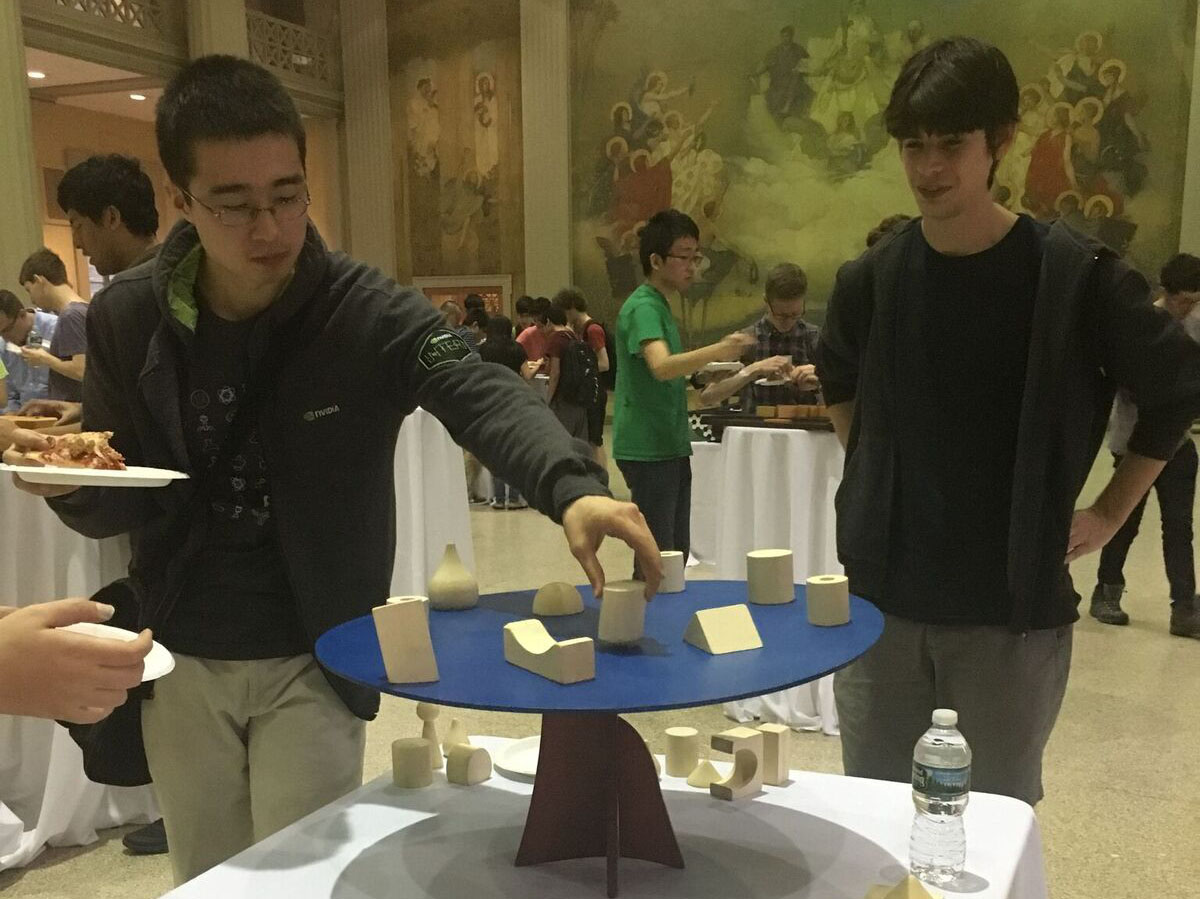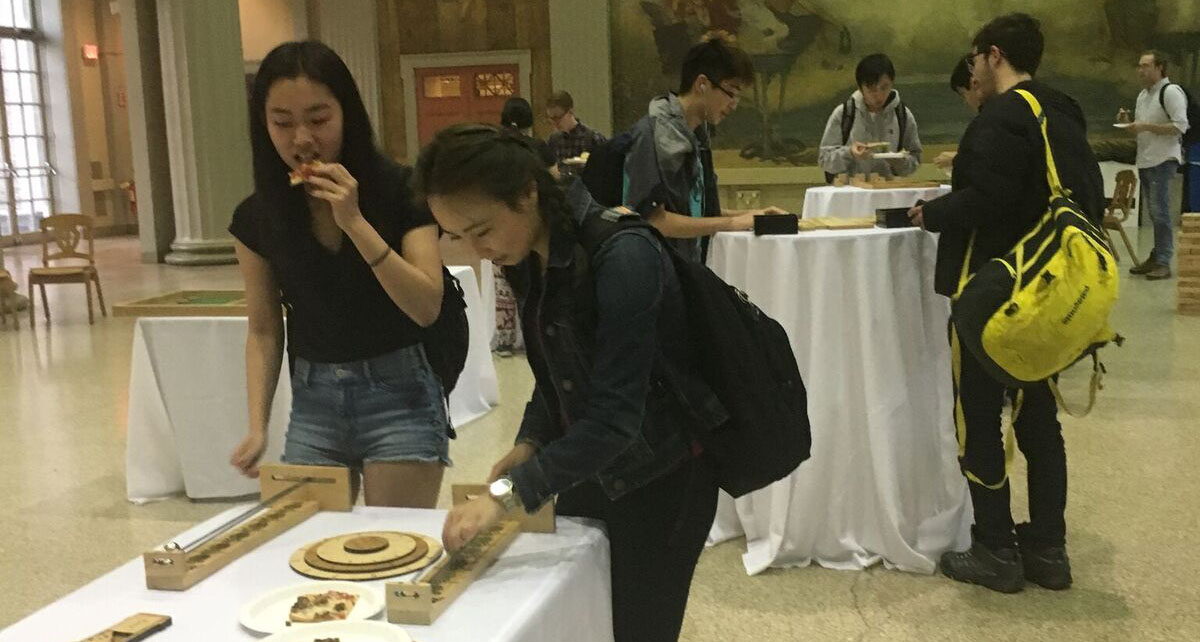MIT Math Department Finds Community in Puzzling
-
-
slice.mit.edu
Filed Under
Recommended

A group of Course 18 students cluster around a puzzle called Maxi Bamboleo: A platform is balanced precariously and littered with wooden objects of varying sizes and weights. The players remove pieces without upsetting the balance. Whoever tips the platform over and crashes the pieces loses. It’s like Jenga, but played horizontally.
“Ok, but how do I win?” asks one of the students. The other students giggle and nod.
MIT Mathematics hosted an inaugural math puzzle event February 21 for members of the department as well as the community at-large. More than 60 students, staff, and faculty arrived at Walker Memorial to play with puzzles of all shapes, sizes, and difficulty. The initiative was awarded an Innovation Fund grant last fall by MindHandHeart, a coalition of students, faculty, and staff working to strengthen the MIT community.
The organizer, Mathematics Professor Steven Johnson '95, PhD '01, says that this kind of event is perfect for the department, which includes some 350 undergraduates, 100 graduate students and post-docs, and 68 faculty. “Mathematicians love games,” he says. “Actually, a lot of people start pursuing math from games.”
“Unlike other departments that have a sequence to their classes, MIT Math is any eight courses in different orders. The experience can be a little fragmented, so we’re hoping events like these can pull people together.”
Johnson got the idea after seeing the Brookline, Massachusetts-based toy company Eureka Games host a bar mitzvah. Eureka coordinators explained the games and rules, but never give answers. Games range from the physical, with mechanical puzzles that need to be organized or untangled, to the abstract. Well-known games like foosball sit alongside more obscure ones like Le Passe-Trappe and Qorridor. The goal is to stump even the brightest player, even if only for a few moments. Johnson could see it translating to the MIT community well.
There’s always a basic need for a community like ours to be social and open.
Back at the MIT Math event, the room was quiet. Students stood munching pizza and concentrating, occasionally letting out a yell or colorful phrase. Associate Professor Philippe Rigollet noted that while only one of the more than 20 games actually tested math skills, it didn’t seem to affect the students’ enjoyment. “I wish we had this more often!” one raved.
Johnson finds it easy to relate to the students’ need for moments of socialization. As a triple major as an undergraduate—physics, mathematics, and computer science and engineering—he remembers feeling some isolation himself. “I became a math major almost by accident, because I had the credits to add it on. I never really hung out with other students in the department.”
“There’s always a basic need for a community like ours to be social and open. Everyone here is nerdy and really excited to share their passion with one another,” says Johnson.
MIT students and alumni have long incorporated games into their work and play. The most famous brainteaser—the legendary Mystery Hunt—is formal, structured, and highly competitive. Johnson actually won a hunt as a student. “I exploited a bug in the scoring process!” he remembers.
Johnson and MIT Math want something less structured—just a place for people to gather, interact, and get some much-needed stress relief. Future MIT Math puzzle events will be open to the whole MIT community, including alumni.








